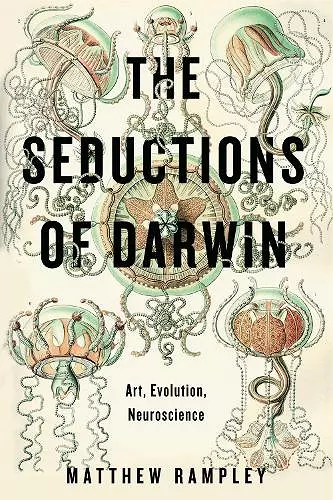The Seductions of Darwin
Art, Evolution, Neuroscience
Format:Hardback
Publisher:Pennsylvania State University Press
Published:12th Jan '17
Currently unavailable, and unfortunately no date known when it will be back

This insightful book explores the intersection of art and science, specifically examining how The Seductions of Darwin addresses evolutionary and neuroscientific approaches to art interpretation.
In The Seductions of Darwin, Matthew Rampley presents a critical examination of how evolutionary theory and neuroscience are increasingly applied to the interpretation of art. This exploration raises essential questions about the interplay between art, culture, and the biological sciences, particularly what insights can be gained by incorporating scientific methods into art analysis. Rampley delves into the intersections of Darwinism, neuroscience, and art history, shedding light on this contemporary discourse.
Rampley's inquiry into the scientific approach to understanding art leads to innovative and thought-provoking ideas regarding its origins and the foundations of aesthetic experience. He investigates various models of artistic development, the evolution of aesthetic response, and the brain processes that underlie creativity. Throughout The Seductions of Darwin, Rampley critically evaluates the arguments put forth by proponents of evolutionary and neuroscientific perspectives, assessing their contributions to the broader understanding of art and culture.
This engaging work advocates for a more integrated view of science and culture, emphasizing the human motivations that drive artistic inquiry. Rampley argues that our relationship with art cannot be fully captured by a singular scientific narrative. Ultimately, The Seductions of Darwin offers a rewarding examination of art history's identity and its intricate connections to scientific thought, making it a significant contribution to the fields of art criticism and cultural studies.
“A lucid historiography of the many manifestations, in art, of Darwin’s theory of evolution. Summing Up: Recommended.”
—D. L. Schuld Choice
“For decades, neuroarthistory, neuroaesthetics, and other biological approaches have been assembling a version of art’s history that is alien to the discipline of art history. Outlandish claims have been made about the significance of brain functioning to works of art, provoking defensive criticism about the pertinence of science to art history. Matthew Rampley advances and opens the discussion by taking up the same scientific criteria advocated by the writers he analyzes, including questions of evidence, hypothesis forming, and explanatory value. In that sense this book is not a polemic but an attempt to find ground for conversation. At its heart is a broad and widely informed concern with the sense of culture that art history might bring to bear in the coming decades.”
—James Elkins, editor of The Stone Art Theory Institutes series
“A thoughtful examination of the attempts to reduce aesthetics and art history to neurophysiology or evolutionary science. It provides a comprehensive survey and penetrating analysis of the efforts to impose biological models on the understanding of the arts that have proliferated in recent decades.”
—Branko Mitrović, author of Rage and Denials: Collectivist Philosophy, Politics, and Art Historiography, 1890–1947
ISBN: 9780271077420
Dimensions: 229mm x 152mm x 20mm
Weight: 499g
200 pages